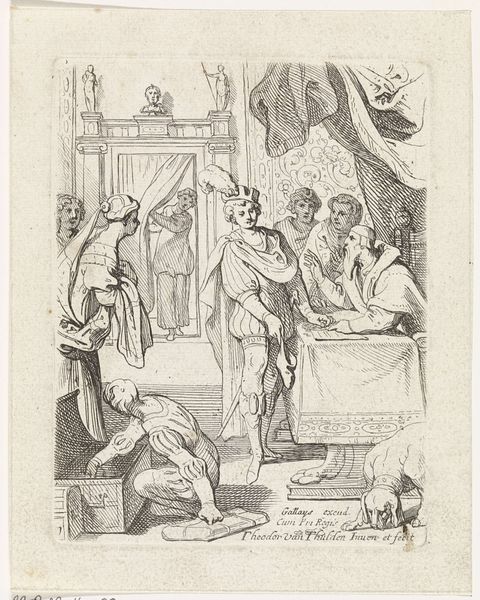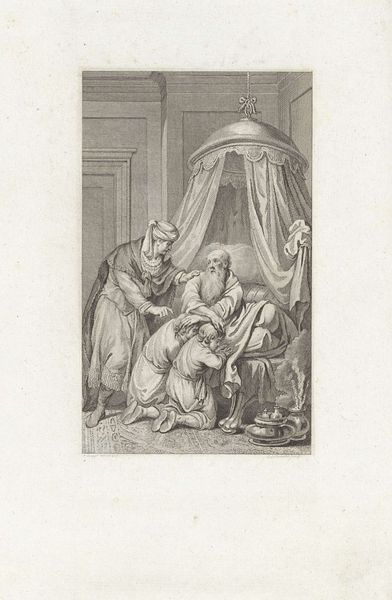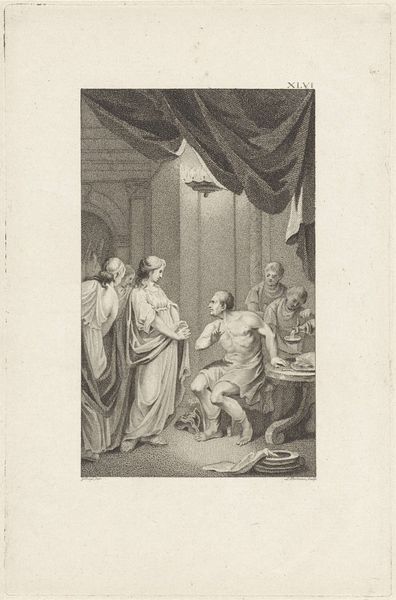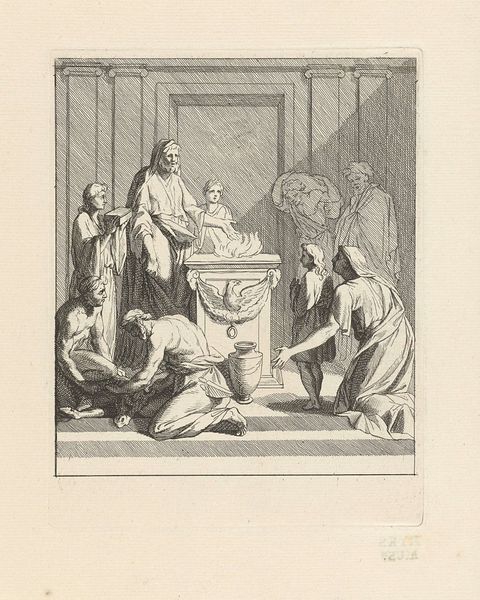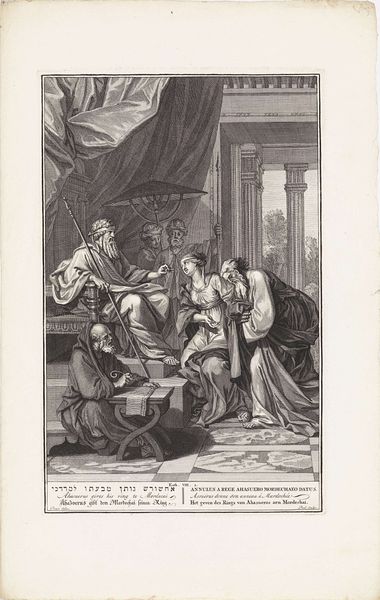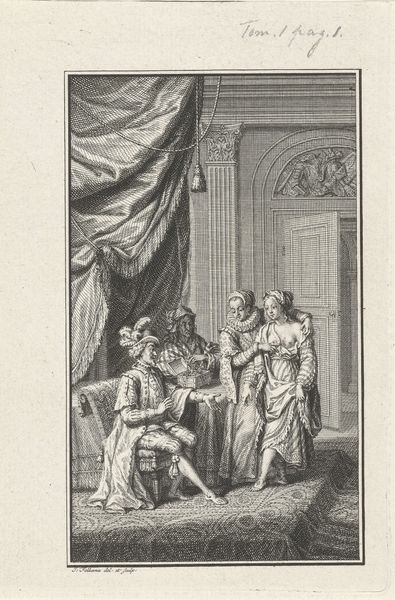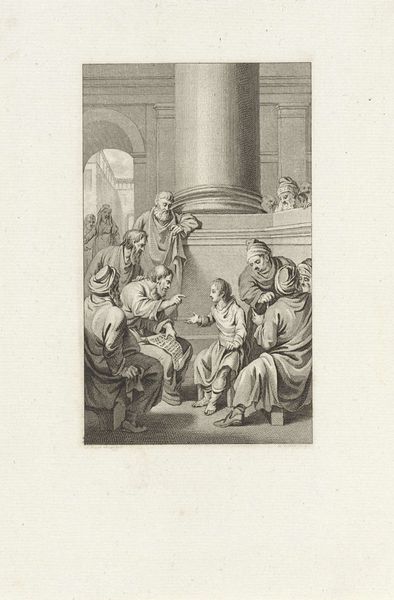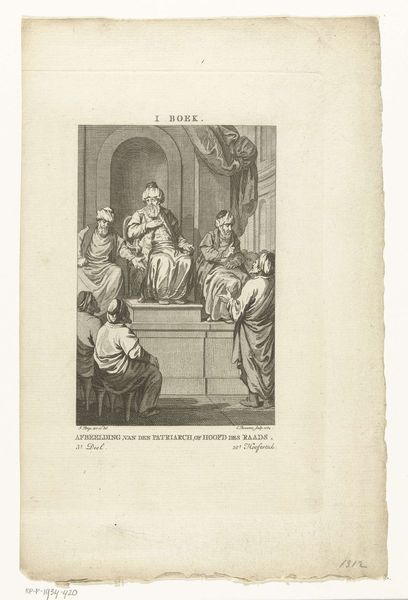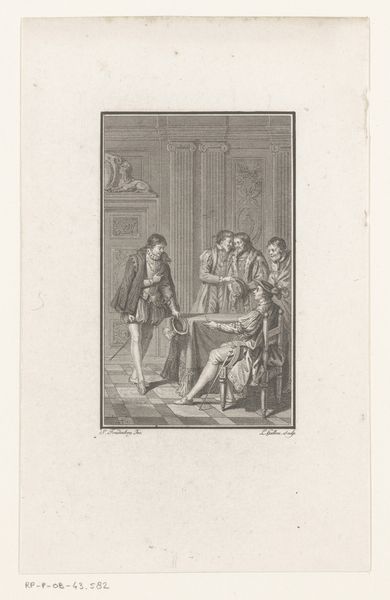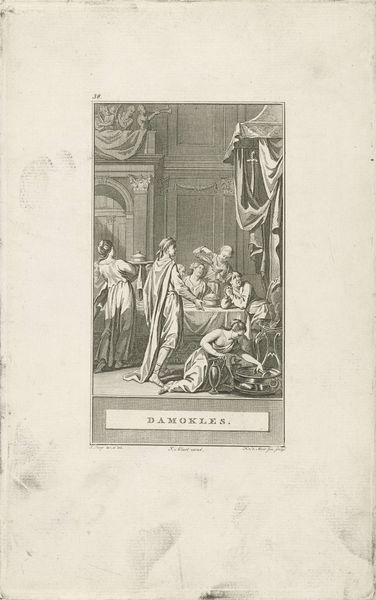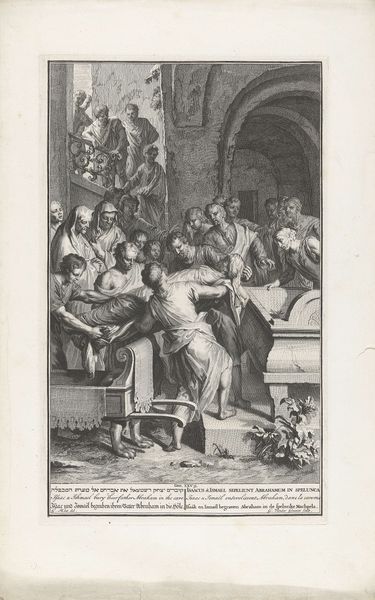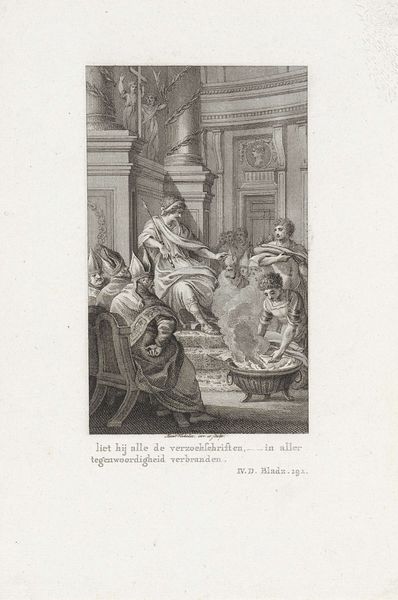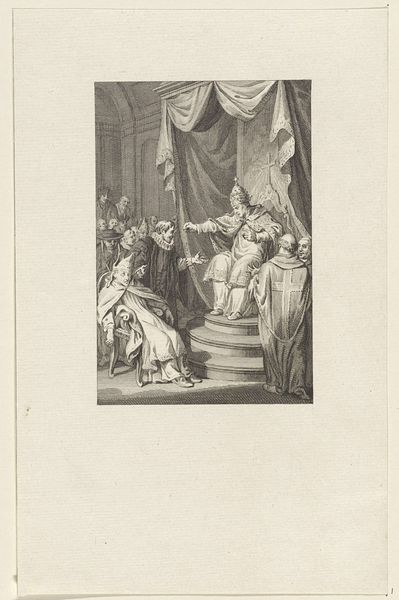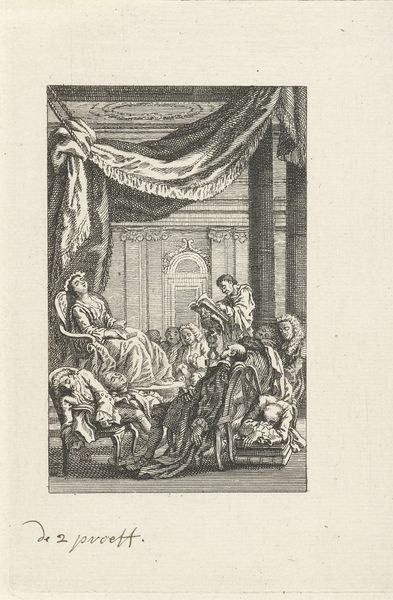
Een kalf wordt klaargemaakt om geofferd te worden aan Juno 1683 - 1733
0:00
0:00
bernardpicart
Rijksmuseum
drawing, print, engraving
#
drawing
#
baroque
# print
#
figuration
#
line
#
history-painting
#
academic-art
#
engraving
Dimensions: height 172 mm, width 128 mm
Copyright: Rijks Museum: Open Domain
Bernard Picart made this print, "A Calf Being Prepared to be Offered to Juno," using etching. The technique involves coating a metal plate with wax, scratching an image into it, and then bathing the plate in acid, which bites away the exposed lines. The plate is then inked and printed. Etching allowed printmakers like Picart to make many copies efficiently. This was crucial for circulating images widely during the Enlightenment. Look closely, and you will see that the etcher's marks are not just lines. The artist is creating texture, tone, and depth, all through the careful labor of incising the plate. The resulting prints, like this one, were affordable and transportable, thus democratizing art and knowledge. While mass production is often seen as antithetical to craft, in this case, it enabled the broader dissemination of skilled artistry, and also a particular vision of the classical world. By understanding the printmaking process, we see how art and industry were intertwined in the 18th century.
Comments
No comments
Be the first to comment and join the conversation on the ultimate creative platform.
